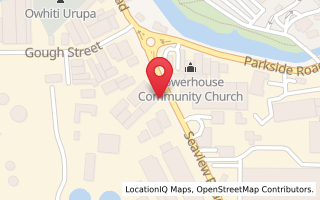

Which Inverter? What is an Inverter? Modified Sine Wave? True/Pure Sine Wave? Generator Inverter? ....need help??? read on.
What are Inverters? An inverter converts the battery power (12V D/C) current into conventional 240V A/C power. This power can be used to run almost any AC appliance absolutely anywhere. They can run items such as mobile phone chargers, lights, electrical appliances, power tools, computers, faxes, TV sets, microwave ovens, battery chargers & motors. Rather than buy special 12-volt versions of the product to operate, you simply take an inverter with you.
How They Work A battery charger or converter takes normal household power and changes it to 12V DC so that you can charge your batteries. It does this using a transformer that reduces the voltage by a factor of 20, and a rectifier that changes AC (alternating current) into DC (direct current). An inverter reverses this process by increasing the voltage by 20 times, and by creating AC current out of the battery's DC current.
Inverter Vs Generator
ASPECT OF UNITS INVERTER GENERATOR
WEIGHT VERY LIGHT USUALLY HEAVY
SIZE COMPACT BULKY
EASE OF USE SIMPLY TURN IT ON PULL START BY HAND
FUEL COST NIL DIESEL/PETROL
MAINTENANCE NIL USUAL FOR MOTORS
POWER RANGE 100-4000W 500W-20000W
NOISE FACTOR SILENT QUIET TO NOISY
Cigarette lighter adapter or battery clips Smaller inverters may use cigarette lighter adapters for easier connection but the bigger units must be connected to battery terminals because the power being drawn is usually too much for the electrical wires of the vehicle or boat.
Which one should you buy? We strongly recommend you buy an inverter that is bigger than you think you need. This is because you can always run something else at the same time. The sizes range from 150W to 2500W models. I could sell a 100W but all it really would run is a light bulb. The size you select is governed by the maximum amount of power you need at one time. The most important thing to do is to assess what you are likely to power from the inverter and total the amount of watts they require. Say, for example, you wish to power a television, 3 * 60W lights and also have a radio on for the kids while you charge your mobile phone. Let's have a look at how you would select the inverter size.
ITEM POWER NEEDED
Colour TV -SMALL 70
3 * 60W lights 180
Radio 10
Phone Charger 10
TOTAL NEEDED 270W
The absolute minimum need to do the job is 270W. You will notice that I can sell you a 300W unit and the next size up is 600W. I would strongly recommend buying the 600W unit, as there will always be times when you wished you’d have bought a bigger unit. To find the power needed to run a particular appliance, simply refer to the specification plate on the appliance itself. It should say e.g. 500W. That is the figure you use. If it only has the amperage, say, 2 Amps, then multiply that figure by the voltage of 240 as follows Watts = Amps x Volts = 2 x 240 = 480 Watts. (call it 500W) Some products have a start up or surge power required. Often they are products with motors. For example, it may need 500W to run the product but need 700W to start it initially. In that case, the 700W is the figure to count.
How long can I run the inverter on my battery? Batteries are specified normally in amp-hours. Hypothetically, you can estimate the battery life as follows using the above example of 270W of products.
Number of Watts need = 270W
Amp-hours consumed = Watts/10 (Rule of thumb in Australian voltage)
= 270/10
= 27 amp-hours
Say you may have a 200Amp-hour battery; it would operate those appliances for about 4 hours. Now, the point to remember here is that no one really does that and also they usually have an item such as a solar panel charging the battery or may run the vehicle or boat while using some or all of the appliances. Naturally, the solar panels are the way to go, charging the battery (hopefully the auxiliary in a dual battery system) during the day for usage in the evening. I recommend you have a battery big enough (at least 200 amp-hours) so you can run what items you need without killing the battery.




| Top |

